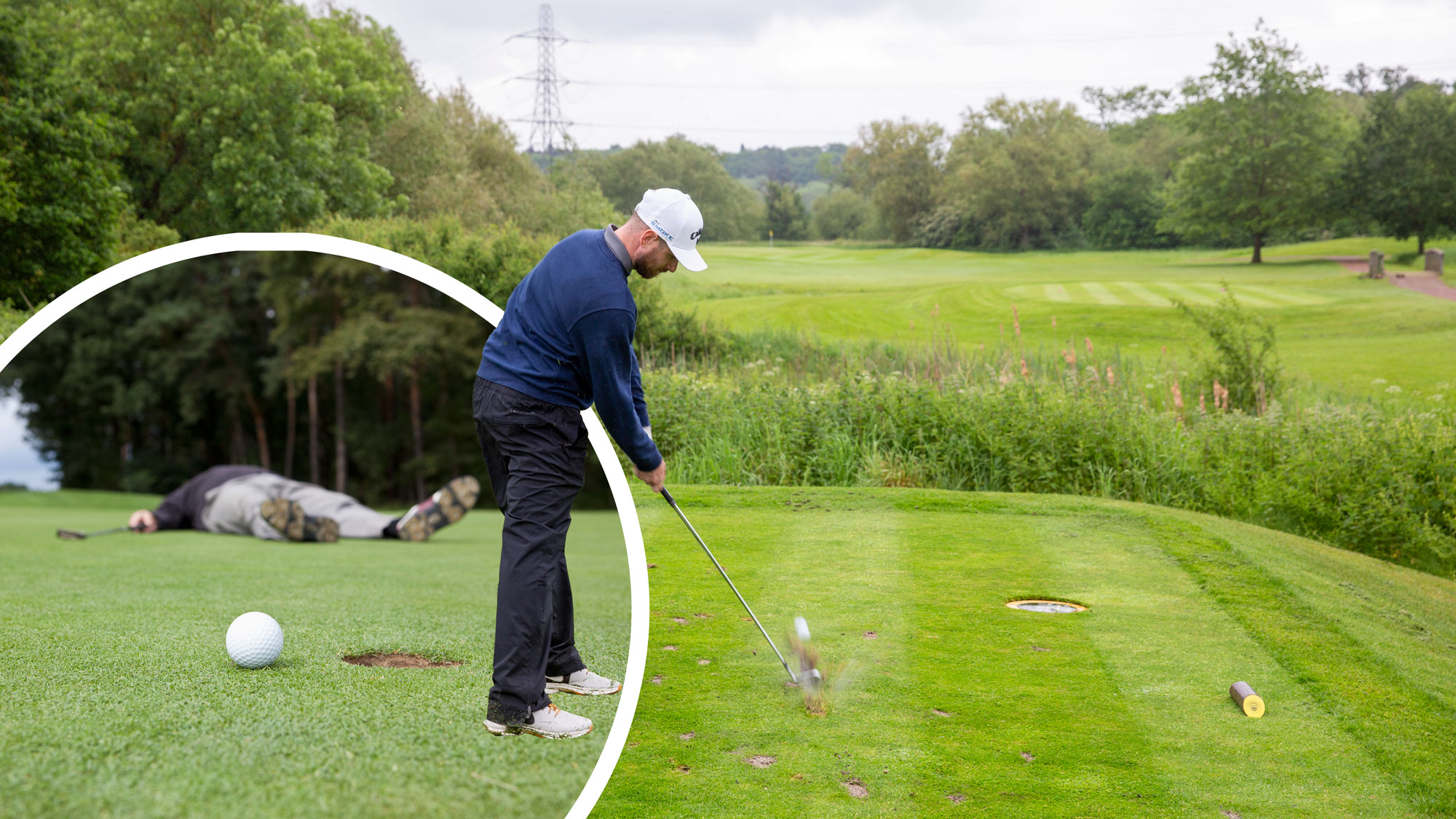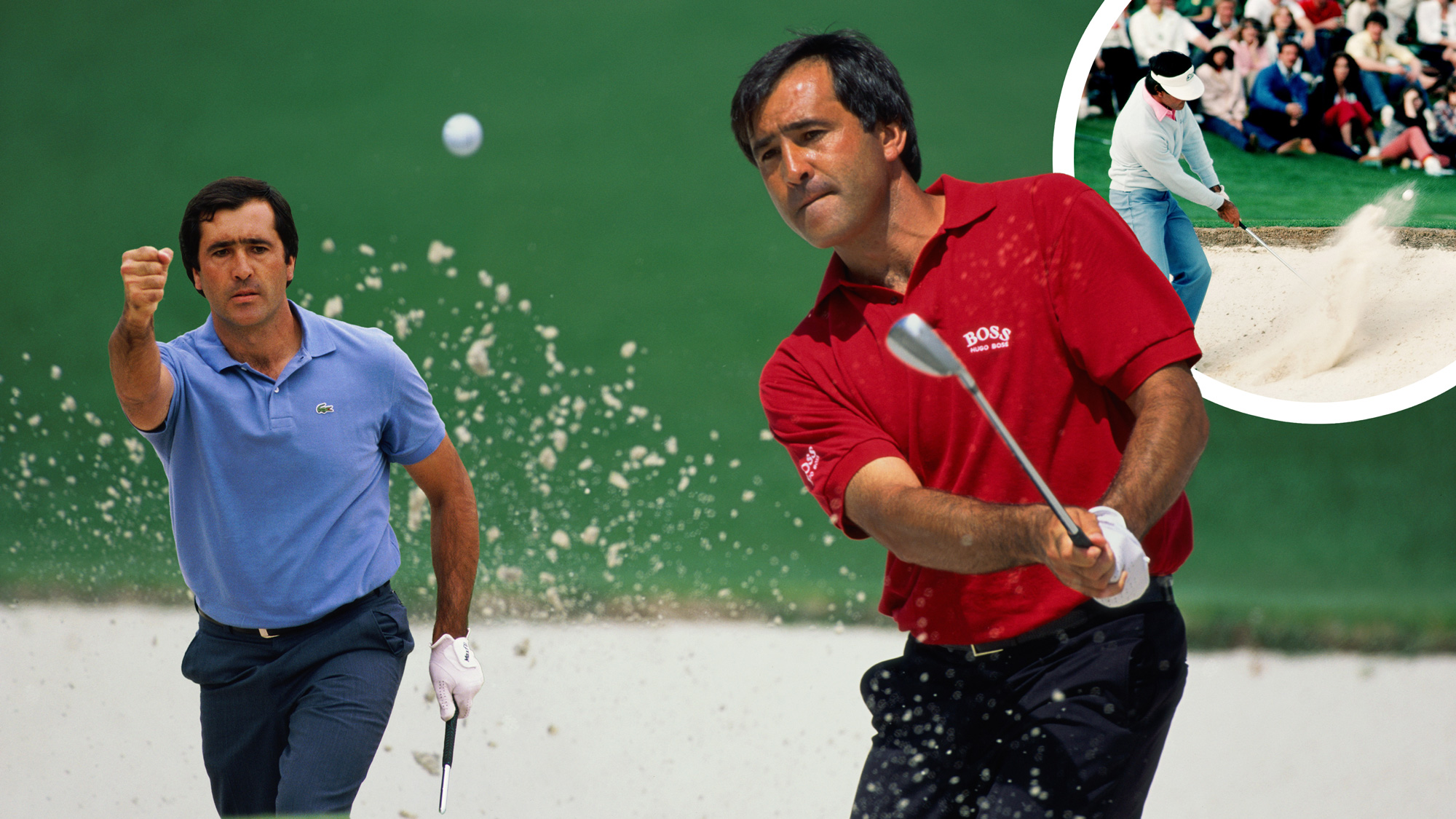Putting In The Wind: 3 Pro Tips To Score Well In Tough Conditions
Whether you love links golf, or the wind is causing havoc during your midweek medal, these 3 expert tips will help you to navigate the greens and putt well...


No matter where you play your golf around the world, it's likely that you have to at least occasionally deal with the full force of the elements. Calculating distance in the wind can be tricky, both from the tee and on approach, but attempting to hole a putt while being battered by the breeze is an altogether different challenge.
There are three key fundamentals to putting well when the wind gets up. Number one is stability – without it your stroke and strike will never really be consistent. The second is rhythm as wind can affect that; and finally distance control, which is vital on the long-range putts you’re more likely to face when the wind gets up and your approach proximity varies.
In this article, Golf Monthly Top 50 Coach Clive Tucker breaks down each of these aspects in more detail and shares his expert tips on putting well in the wind...
1. Stability Is King
Stability is the number- one priority in the wind, so I would recommend making your stance a little wider but with the ball in the same position relative to your front foot. Then place a little more weight on your left side so you’re firmly rooted. The more stable you can be at address, the easier it will be to maintain it when putting.
A good way to check your stability is to feed an alignment stick through your belt buckles and loops at the front. You can then see how much it moves about as you make your stroke. If it remains relatively still, you’ll know your shoulders are working from a very stable base.

The third round of the 2024 Open Championship challenged players with strong wind, making it difficult to putt
2. Think 'One-And-Two'
Next up is rhythm. First, identify your normal rhythm, which you can do indoors or outside when it’s calm and warm. Mine would be a ‘one-and-two’ rhythm talking at normal speed – ‘one’ as I take the putter back; ‘and’ during the slight pause between backstroke and forward stroke; and ‘two’ as I actually make the stroke. Keep that in mind and you’ll be able to maintain a constant rhythm and putt better when being buffeted by the wind.

Ludvig Aberg using a textbook putting rhythm to ensure a smooth roll on his putt in windy conditions
3. Distance Control Drill
This is a great drill to sharpen distance control in the wind. Put three tee pegs down in an arc beyond the hole a putter’s length away. Then take six balls and place them at five, seven, nine, 11, 13 and 15 paces from the hole, so around 15 to 45ft.
Get the Golf Monthly Newsletter
Subscribe to the Golf Monthly newsletter to stay up to date with all the latest tour news, equipment news, reviews, head-to-heads and buyer’s guides from our team of experienced experts.
The goal is to see how many either go in or past the hole, but not beyond the tee pegs. You can even score it to make it more competitive – perhaps three for holing it, one for finding the scoring zone and minus one for being short or too long, which will also teach you to not leave anything short!
You can adapt this to suit whatever putts you’re finding most tricky – so, if you’re struggling downhill from distance, set it up on a downslope.
Want To Read More Expert Golf Tips?
The Golf Monthly archive is a gold mine of brilliant reads, documenting a journey through the history of golf dating back to our first issue in 1911. Take advantage of over 100 years of invaluable tips from the best tour professionals and coaches in world golf, by subscribing to the online Golf Monthly Archive.

Location: Mannings Heath
Clive spent ten years as a playing professional before making the move into elite coaching. He's worked with a number of Tour professionals, and one of his great strengths is being able to tailor his instruction for each student no matter what their level.
Teaching philosophy:
Make changes and growth pertinent, measurable, simple and enjoyable. Give students the skills to develop and manage their game as well as possible. Ultimately, help them to become independent.
Significant influences:
I was taught by some very gifted coaches whilst playing on Tour, and have watched teachers with all kinds of philosophies whilst I've been coaching for the last 20 years. All have had such a positive effect. George Robb had a very keen eye; David Leadbetter was extremely diligent; Denis Pugh, generous and encouraging; Mac O`Grady was a fountain of knowledge, and Pete Cowen an inspiration. Michael Dalgleish was also a world class physio.
Greatest success story:
Working with Graeme McDowell and David Howell have been particular highlights. During my time working with them, they rose from roughly 150th in the world to 4th and 9th, respectively, and competed in six Ryder Cups between them.
-
 PGA Tour Truist Championship Creator Classic Line-Up And Format Revealed
PGA Tour Truist Championship Creator Classic Line-Up And Format RevealedThe PGA Tour has announced the line-up for the second Creator Classic ahead of the Truist Championship - with YouTubers from outside golf taking on the challenge
By Paul Higham
-
 Are You Tired Of Your High-Handicap Golfer Status? These 4 Substantiated Tips Are Your Salvation
Are You Tired Of Your High-Handicap Golfer Status? These 4 Substantiated Tips Are Your SalvationBeing a high-handicap golfer is not easy, with consistency being difficult to establish and progress hard to come by... until you try these four simple tips!
By Barry Plummer
-
 Thomas Bjorn Shares An Invaluable Scoring Tip He Learned From Tiger Woods
Thomas Bjorn Shares An Invaluable Scoring Tip He Learned From Tiger WoodsThomas Bjorn shares a superb tee to green masterclass, including some invaluable scoring advice from Tiger Woods, in a bid to help you improve on the course
By Barry Plummer
-
 I Had No Idea It Was This Easy To Hit Draws And Fades... You Have To Try This Foolproof Formula Now
I Had No Idea It Was This Easy To Hit Draws And Fades... You Have To Try This Foolproof Formula NowWhen Top 50 Coach Alex Elliott shared this simple formula with me, I could not believe how easy it was to draw and fade the golf ball... you have to try it!
By Barry Plummer
-
 Sandy Lyle Shared 3 Top Tips With Us Prior To Winning The Masters in 1988... And They Could Still Save You Shots 37 Years Later
Sandy Lyle Shared 3 Top Tips With Us Prior To Winning The Masters in 1988... And They Could Still Save You Shots 37 Years LaterThe 1988 Masters Champion shared his expert tips in the January 1988 issue of Golf Monthly, but they are still absolute gems for amateur golfers to this day...
By Barry Plummer
-
 Are You More Accurate Than The Average Amateur Golfer? Peter Finch Can Help You Hit More Fairways In 2025
Are You More Accurate Than The Average Amateur Golfer? Peter Finch Can Help You Hit More Fairways In 2025There is no better feeling than striping one down the middle of the fairway, but many amateurs struggle with accuracy. Peter Finch has four pro tips to help...
By Barry Plummer
-
 Are You A Victim Of This Destructive Golf Swing Fault? Let Me Help You Fix It Before You Tee It Up This Weekend
Are You A Victim Of This Destructive Golf Swing Fault? Let Me Help You Fix It Before You Tee It Up This WeekendAn overswing in golf is a destructive habit which can cost us precious shots on the golf course, but PGA Pro John Jacobs has a quick fix to get us game ready...
By Barry Plummer
-
 Do You Struggle With Distance Off The Tee? Try This Quick Fix To Make 2025 Your Biggest Golf Season Yet
Do You Struggle With Distance Off The Tee? Try This Quick Fix To Make 2025 Your Biggest Golf Season YetStruggling with distance off the tee could be a major reason why your handicap isn't coming down or your scores aren't improving, but our quick fix can help...
By Barry Plummer
-
 Seve's 'Lost' Bunker Lesson: Master Slopes And Transform Your Short Game Today
Seve's 'Lost' Bunker Lesson: Master Slopes And Transform Your Short Game TodaySeve's forgotten bunker lesson, from Golf Monthly's August 1983 issue, could hold the secret to better bunker play and supercharging your short game this season
By Barry Plummer
-
 Is Your Golf Swing Failing You? This All-Encompassing Drill Can Instantly Save It
Is Your Golf Swing Failing You? This All-Encompassing Drill Can Instantly Save ItAre you struggling with your golf swing? Discover the all-encompassing drill that can fix common swing faults and restore your game. Get back on track today!
By Tom Motley